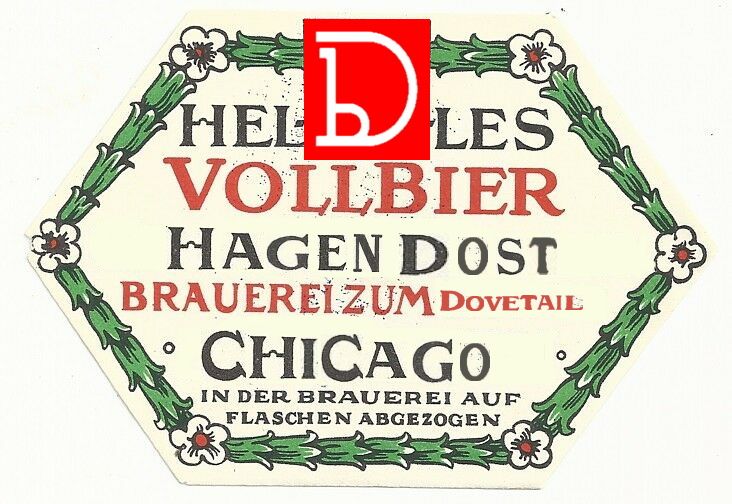And now I have learned of another brew that was invented as a response to the popularity of the pilsner. In this case, however, it was the OG pilsners of Bohemia that prompted a zymurgylogical riposte. It seems odd to me that a Czech brew would run roughshod over Germany's beer scene because, as we saw with the invention of the cream ale, it is the Germans who like to do the blitzkrieging over others.
From what I gather, Gabriel
Sedlmayr II, who inherited the Spaten Brewery in Munich along with his brother
Josef, devised the Helles in 1894 after he'd already come up with the Märzen. That's
a 1-2 punch right up there with that of the guy who invented the hazy IPA and
then followed it up with the juicy IPA.
While it's easy to find articles on the internet that
maintain the Helles was the German answer to increasing Bohemian pilsner sales within its borders,
I haven't found anything that gives firm numbers. Just how badly was German
beer losing this Bierkampf to their neighbors to the east? And was pilsner on the
rise only in the Munich area in 1894? Bavaria? The whole of Germany? We may
never know. Well, not until Ron Pattinson and/or Andreas Krennmair investigate the subject and then blog about it.
However the history actually transpired, Sedlmayr's
concoction is one of my favorite bier styles. It has a rich, bready grain
flavor complemented by Noble hops or Noble-tasting ones, anyway. My love for
the Helles started back in my freshman year of college when one of my new-found
friends on my dorm floor offered to share his stash of German brews. And I
don't mean a smattering of stray Beck's and St. Pauli Girl bottles he had snagged from some small town
liquor store that was happy to sell to underage kids. He had spent his final semester
of high school in Deutschland and smuggled some precious liquid bread back
home. My memory tells me he and I drank all of the beers ourselves because
everyone else to whom the offer of some fine imported suds was extended to
refused on the grounds that there was still yeast in one of the bottles and
that another was dark instead of light yellow like Miller and Bud.
What made me fall in love with those beers was all of the melanoidins.
Those delectable molecules give beer that lightly toasted bread flavor, for
want of a better way to put it. Apparently decoction is the way to create those
molecules and the Germans love to decoct. Americans generally don't which is
likely why I find most domestic versions of the Helles to be inferior. It's
like brewers here think that if they just brew a pils but use less hops than
they normally would, they've made a Helles.
I've already celebrated a few beers from Chicago's Dovetail here and I believe
I noted at some point that they engage in more than a little decoction. So,
when I opened my first can of their Helles, I figured that developing a
fondness for this beer was a fait accompli.
Upon taking a sip I was not disappointed. Melanoidin galore!
While the beer was medium-light (leaning towards the light side) on the tongue,
it had a great, rich malty taste full of toasty bread and a more general graininess.
There was just a hint of sweetness. All of those malt flavors were complemented
by some hops which had a slightly peppery flavor and provided a gentle
bitterness. Swallowing I found that the malty flavors faded while the hoppy
ones remained. The fizz dried things out just a tad making for a delightfully clement
finish.
I will get down to brass tacks: this is the best American
Helles I have ever tasted. Drowning in that decocted goodness on my first sip reminded
me of that fateful day in the dorm when I learned what good beer tasted like. I
could write an encomium to the toasty essence of the grain flavors here but I won't. Instead, I
want to say that I also loved the hops. That fresh, green grassy/floral scent – oh,
man! That is such a wonderful aroma. Evocative of summer and its verdant
landscapes with life in full bloom.
Hopefully, as Dovetail's distribution here in Madison widens (and let us also hope it deepens with Rauchbier), their brews will be featured at a tap takeover at Olbrich Biergarten because that is how nature intended for them to be consumed. You just can't go wrong with Dovetail and the Biergarten is close to home.
Junk food pairing: With such a kickass beer decocted with ruthless German efficiency, go big on the junk food. I heartily recommend a central European theme by pairing Old Dutch Onion & Garlic potato chips (the bag is yellow just like Dovetail cans!) with Heluva Good!'s Bacon Horseradish dip.


2 comments:
As I scribe on my regular bookmark page, Dovetail's reputation is spreading world-wide. It has been mentioned on a number of beer podcats I have downloaded and listened to. I like a lot of its beers. The slight problem is it typically sells them only in four-packs of 16-oz. cans. When shopping package stores, compacting everything into cases fails when you have 12-oz. cans, 12-oz. bottles, and 16-oz. cans. Something winds up outside the box. !=)}
There are worse problems to have. :)
Post a Comment